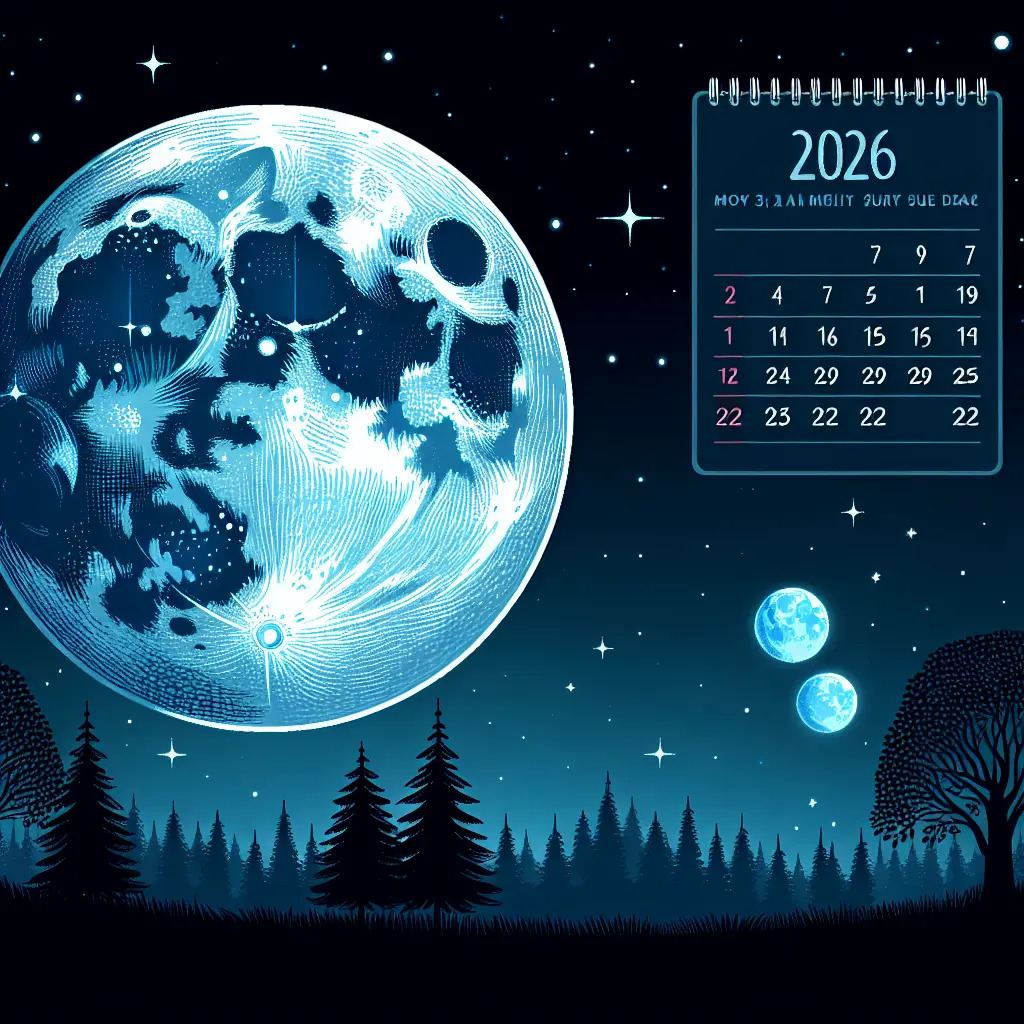The anticipation is building for a rare and fascinating celestial event: the Blue Moon set to occur on May 31, 2026. This exciting phenomenon will captivate sky-watchers and astronomy enthusiasts around the globe. But what exactly is a Blue Moon, and why does it captivate our imagination?
A Blue Moon is not literally blue; rather, it refers to a full moon occurring twice within a single calendar month. This happens because the lunar cycle lasts approximately 29.5 days, which occasionally allows for two full moons in one month. This upcoming Blue Moon is known as a "monthly Blue Moon."
Here's a quick breakdown of how this happens:
Lunar Cycle: The moon completes its cycle in about 29.5 days.
Calendar Misalignment: Most months have 30 or 31 days, leading to the occasional occurrence of two full moons.
Why Do We Call It a "Blue Moon"?
The term "Blue Moon" has been part of folklore for centuries. It's often used to describe something rare or unusual. The phrase "once in a blue moon" reflects this rarity, making it a special event for those who appreciate the wonders of the night sky.
Mark your calendars for May 31, 2026. This date will provide an opportunity to witness the second full moon of that month. Whether you're a seasoned astronomer or simply enjoy the beauty of the night sky, this is an event you won't want to miss.
Tips for Viewing
To make the most of this celestial event, consider these tips:
Location and Timing
Location: Find a spot with minimal light pollution for the best viewing experience.
Timing: Keep an eye on local moonrise times to ensure you don't miss the spectacle.
Tools: While you can enjoy the Blue Moon with the naked eye, binoculars or a telescope can enhance the experience.
The allure of the Blue Moon lies in its rarity and beauty—a cosmic reminder of the intricacies of our universe. Whether you plan a night under the stars with loved ones or a solitary evening of quiet reflection, this Blue Moon offers a chance to connect with the rhythms of nature.
For more details on this celestial event, you can refer to this article.










Leave a Comment